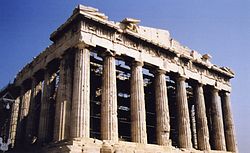- A brief account of the history of logic, from the The Oxford Companion to Philosophy (edited by Ted Honderich), OUP 1997, 497-500.
- A biography of Peter Abelard, published in the Dictionary of Literary Biography Vol. 115, edited by Jeremiah Hackett, Detroit: Gale Publishing, 3-15.
- Philosophy in the Latin Christian West, 750-1050, in A Companion to Philosophy in the Middle Ages, edited by Jorge Gracia and Tim Noone, Blackwell 2003, 32-35.
- Ockham wielding his razor!
- Review of The Beatles Anthology, Chronicle Books 2000 (367pp).
- A brief discussion note about Susan James, Passion and Action: The Emotions in Seventeenth-Century Philosophy.
- Review of St. Thomas Aquinas by Ralph McInerny, University of Notre Dame Press 1982 (172pp). From International Philosophical Quarterly23 (1983), 227-229.
- Review of William Heytesbury on Maxima and Minima by John Longeway, D.Reidel 1984 (x+201pp). From The Philosophical Review 96 (1987), 146-149.
- Review of That Most Subtle Question by D. P. Henry, Manchester University Press 1984 (xviii+337pp). From The Philosophical Review 96 (1987), 149-152.
- Review of Introduction to the Problem of Individuation in the Early Middle Ages by Jorge Gracia, Catholic University of America Press 1984 (303pp). From The Philosophical Review 97 (1988), 564-567.
- Review of Introduction to Medieval Logic by Alexander Broadie, OUP 1987 (vi+150pp). From The Philosophical Review 99 (1990), 299-302.
Friday, April 1, 2011
Noosphere
Noosphere (pronounced /ˈnoʊ.ɵsfɪər/; sometimes noösphere), according to the thought of Vladimir Vernadsky and Teilhard de Chardin, denotes the "sphere of human thought". The word is derived from the Greek νοῦς (nous "mind") + σφαῖρα (sphaira "sphere"), in lexical analogy to "atmosphere" and "biosphere". Introduced by Pierre Teilhard de Chardin 1922 in his Cosmogenesis".Another possibility is the first use of the term by Édouard Le Roy, who together with Chardin was listening to lectures of Vladimir Vernadsky at Sorbonne. 1936 Vernadsky accepted the idea of the Noosphere in a letter to Boris Leonidovich Lichkov (though, he states that the concept derives from Le Roy).
In the original theory of Vernadsky, the noosphere is the third in a succession of phases of development of the Earth, after the geosphere (inanimate matter) and the biosphere (biological life). Just as the emergence of life fundamentally transformed the geosphere, the emergence of human cognition fundamentally transforms the biosphere. In contrast to the conceptions of the Gaia theorists, or the promoters of cyberspace, Vernadsky's noosphere emerges at the point where humankind, through the mastery of nuclear processes, begins to create resources through the transmutation of elements. It is also currently being researched as part of the Princeton Global Consciousness Project.
In the original theory of Vernadsky, the noosphere is the third in a succession of phases of development of the Earth, after the geosphere (inanimate matter) and the biosphere (biological life). Just as the emergence of life fundamentally transformed the geosphere, the emergence of human cognition fundamentally transforms the biosphere. In contrast to the conceptions of the Gaia theorists, or the promoters of cyberspace, Vernadsky's noosphere emerges at the point where humankind, through the mastery of nuclear processes, begins to create resources through the transmutation of elements. It is also currently being researched as part of the Princeton Global Consciousness Project.
Subscribe to:
Post Comments (Atom)





No comments:
Post a Comment